Back in the Paleolithic: hunter-gatherers of the 21st century in the project "Living wild"
Categories: Photo project
By Pictolic https://pictolic.com/article/back-in-the-paleolithic-hunter-gatherers-of-the-21st-century-in-the-project-living-wild.htmlPhotographer Kili of UAN (Kiliii Yuyan) is most interested in the cultures of indigenous peoples, especially those who live in close connection with the earth. On the background of environmental shocks Kili shows the audience the essential connection with nature, which has kept alive the traditional culture for millennia.

"Living wild" (Wild Living) is a project in which Kili documented group of hunter-gatherers of the 21st century. These people are re-discovering life skills, traditional Paleolithic. The movement is headed by a woman named Wilden lynx (Lynx Vilden). She was born in London, in his youth lived in Amsterdam and her main passion was punk rock. Period of hedonistic lifestyle links was replaced by a less organized and comfortable. She moved to desert area in the North-West of the USA. Lives in the mountain forest and its way of life that emulates the stone age.
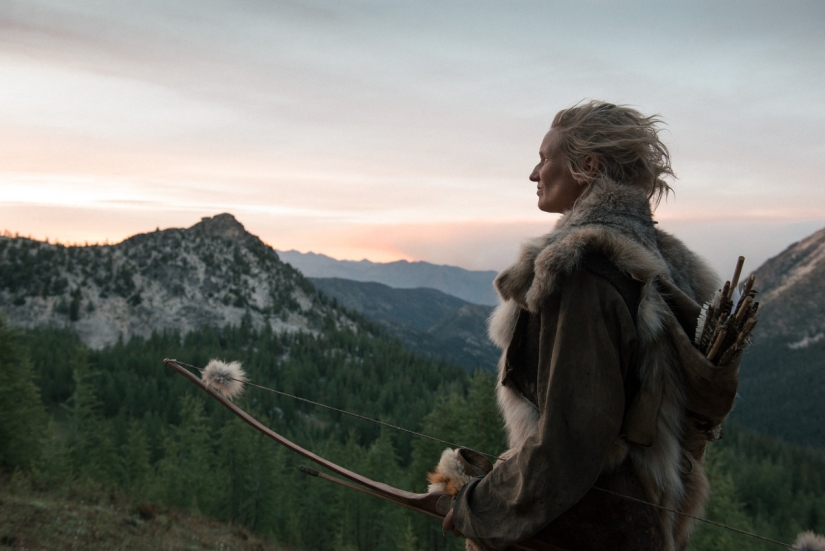
52-year-old lynx Vilden ranked among the world's leading experts on primitive skills. She spent half her life in the wild and loves to conduct workshops in the Stone age (Stone Age). The participants are United by the desire to leave the present and return to the primeval life.
Linx wants to show others how to live with the land and be one with nature. She is trying to recover the ancient way of life that can resolve the tension between human technology and wildlife.
Every year her project involved people from different places of the planet. They undergo annual training, prepare hides, dried foods and learn other skills (archery, making fire) that are useful for survival.

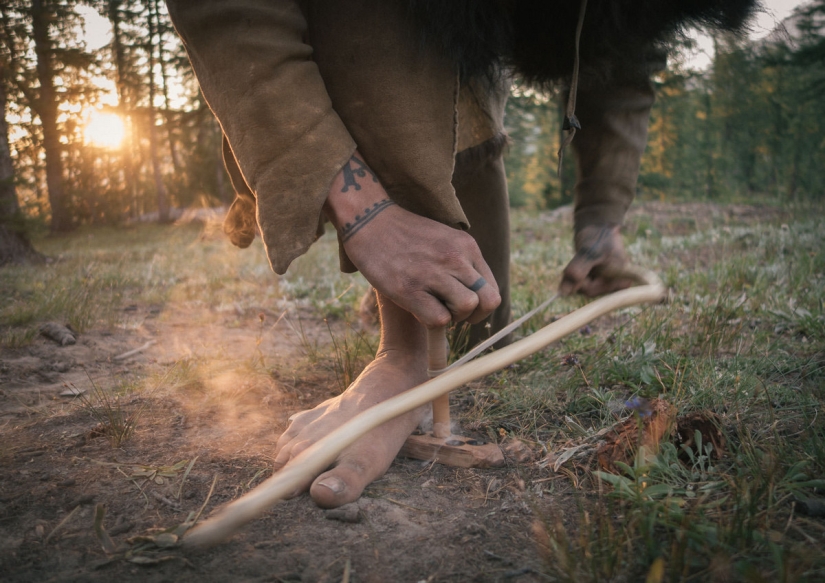
Skilled hands turn the pegs to the fire. Each successful breeding of fire – a real gift, given that its production required many components.
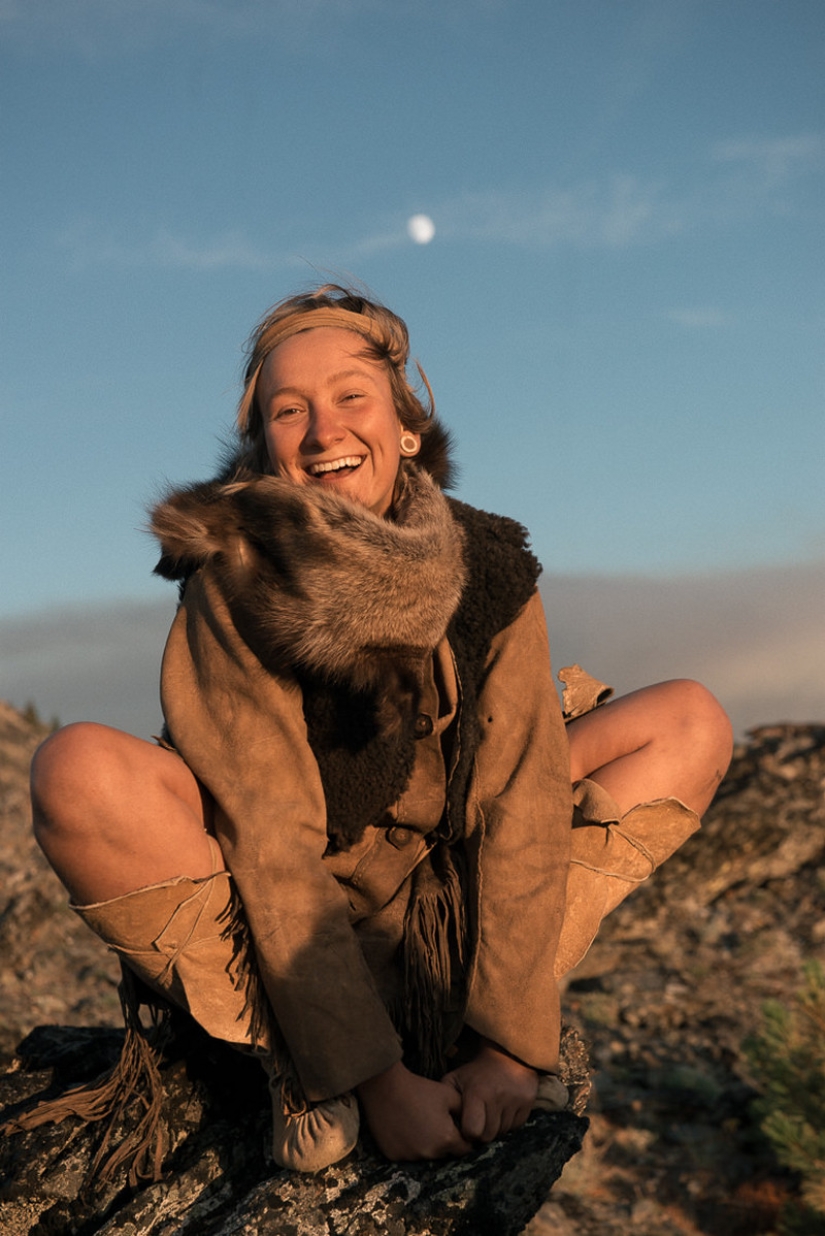
Chantelle laughs. She gleefully welcomes its first sunset over the camp. Her good mood during the project periodically faded.
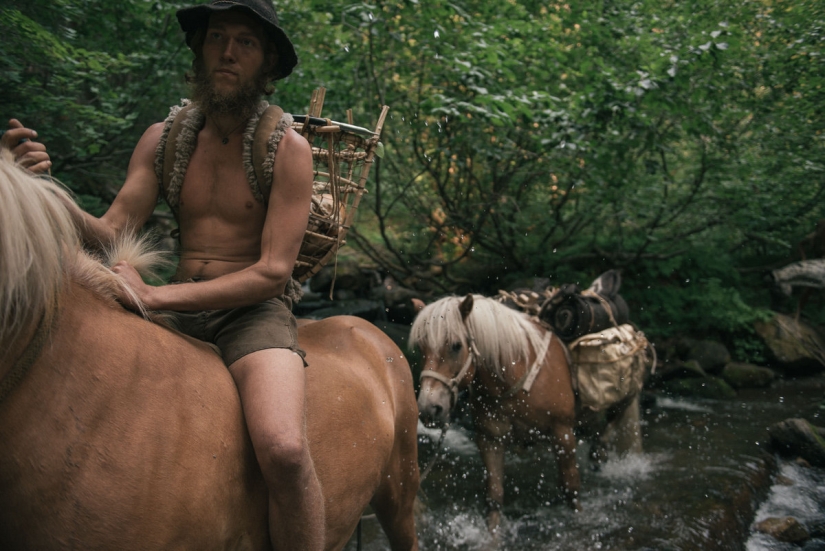
Riding Bareback – a harsh, but a quick way to cover large distances. Are no roads, so the horses are forced to follow in challenging terrain, deer trails.
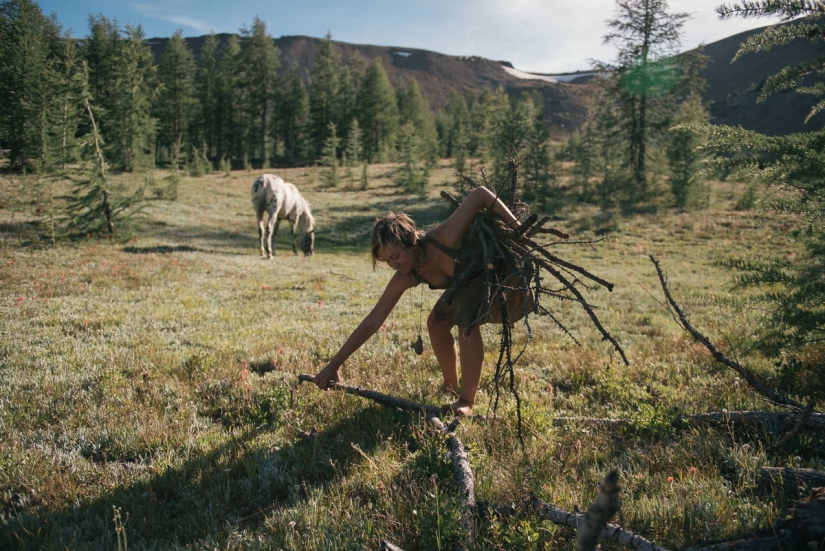
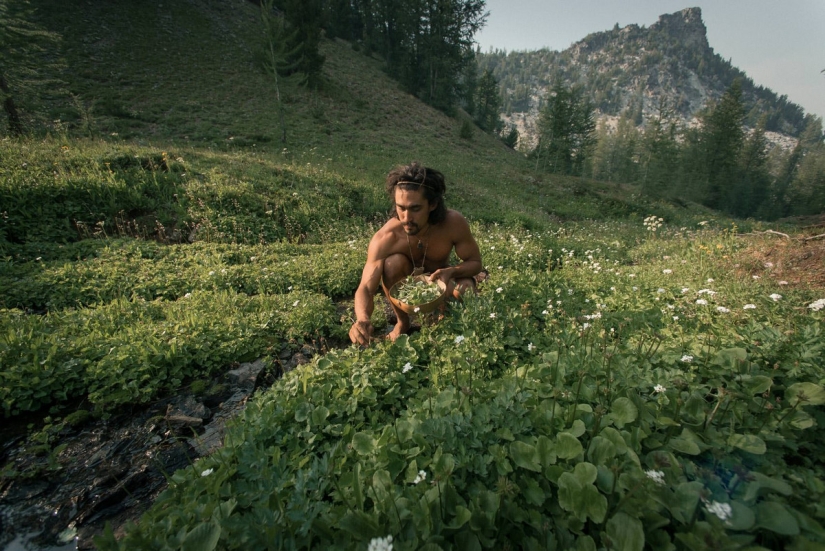
Matt gathers for dinner the leaves of the saxifrage. Although hunter-gatherers have often been portrayed as breadwinners big game, most of the calories is usually extracted from trusted plant sources.
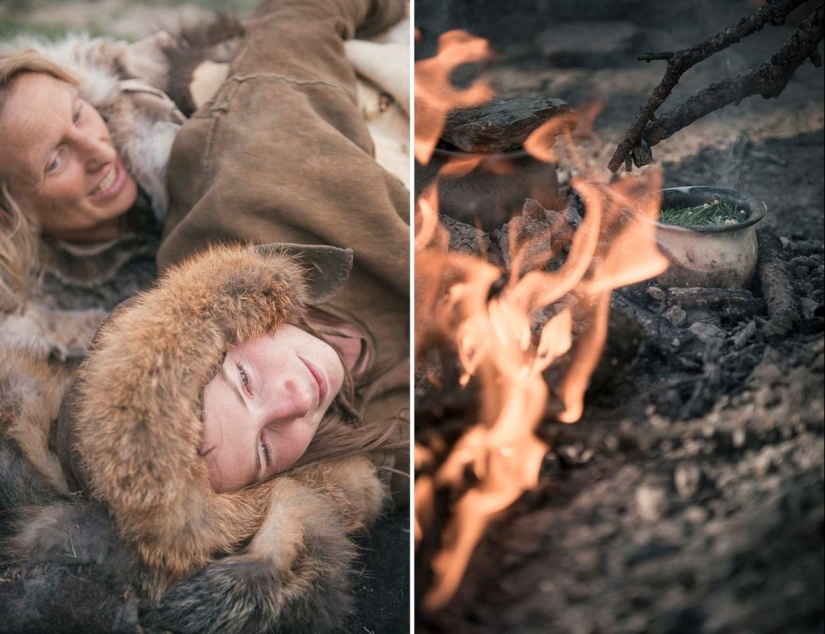
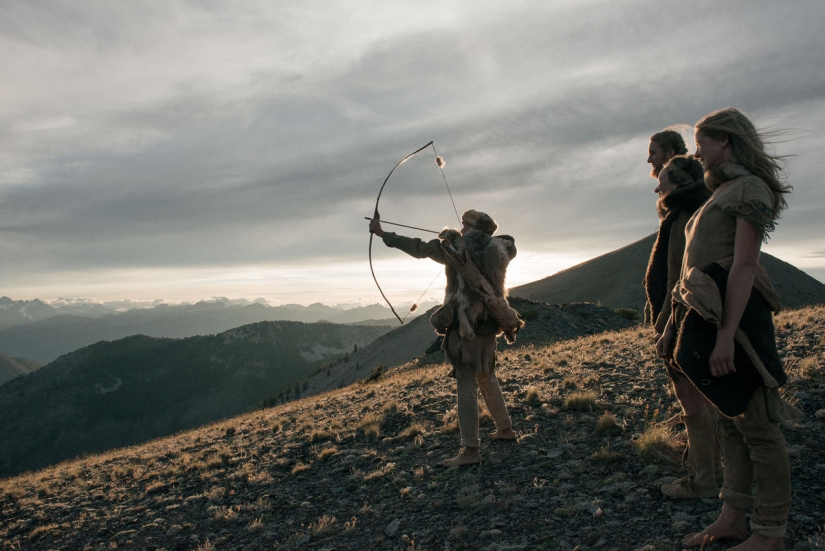
Each participant arrives with the necessary skill of leather tanning. Using the oldest method of dressing, produce rawhide, or "leather brain tanned". This is a laborious process. Creating one outfit for the temperate weather may take 7-10 deer hides and 3 months time. Clothing made of buckskin is durable and can last for many years.
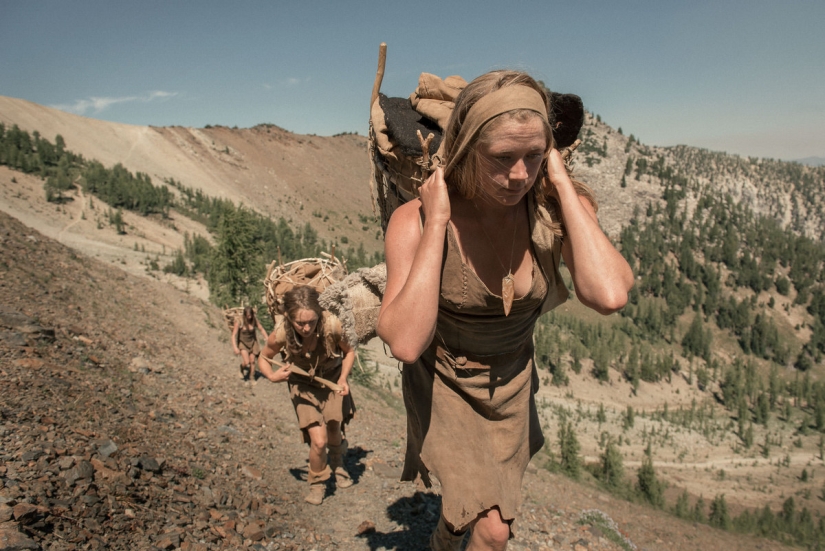
Project participants climb up the hill. They transfer their camp to the valley with the best prospects for hunting. Heat. Each person is from 18 to 40 kilograms primitive equipment.
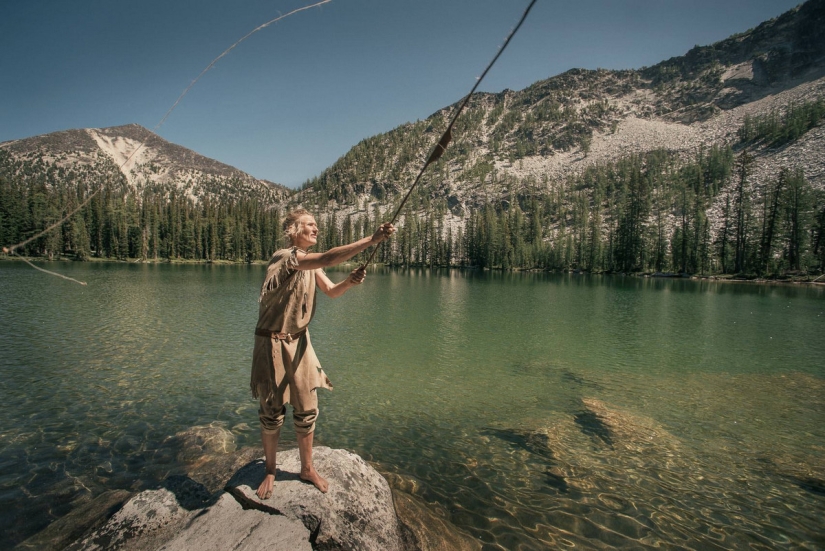
Linx throws a rope with a hook for fishing, attaching it to a hunting bow. She carries with her a few things, and each of its tools is used for many purposes.
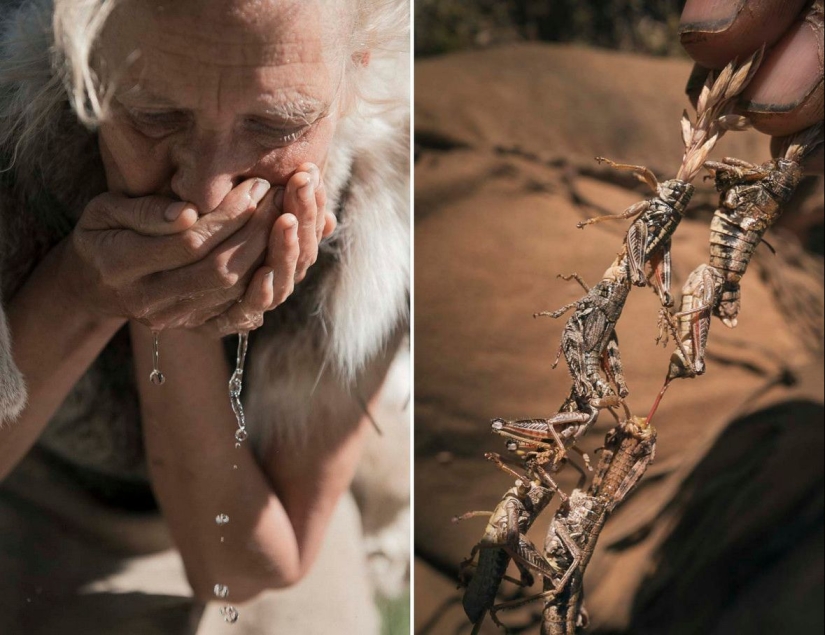
Hunger affects what people consider edible and drinkable. Linx drinking directly from a stream by carefully noting its source. Grasshoppers – a hearty meal when roast on the fire.
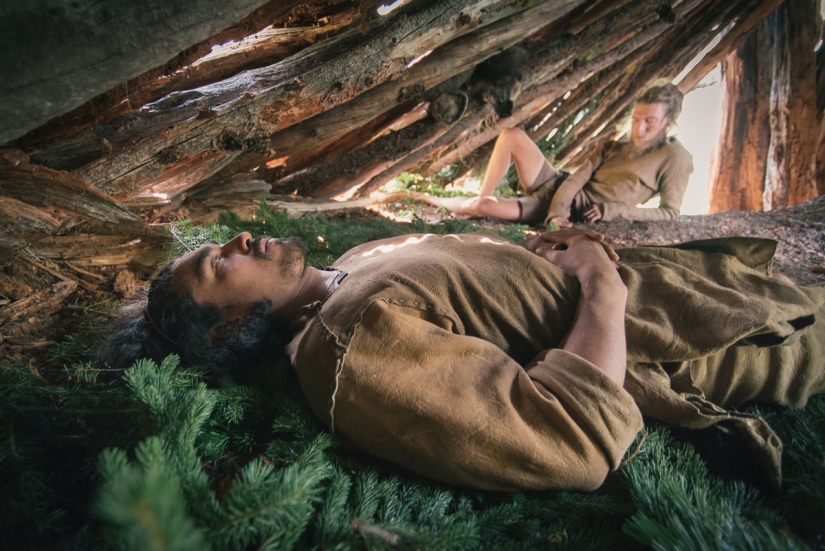
Matt, exhausted by hunger and hard work for the construction of housing, makes a break in the fresh layer of fir boughs, which will serve as insulation and bedding.
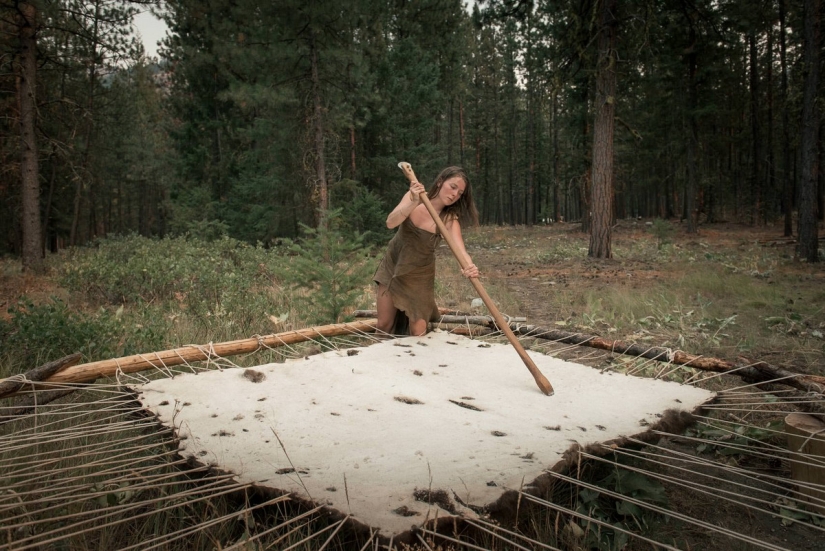
Emma softens the skin of the bison. It is thick and the finish requires a lot of effort. But the result is a desirable protective layer, which it will cover your body.
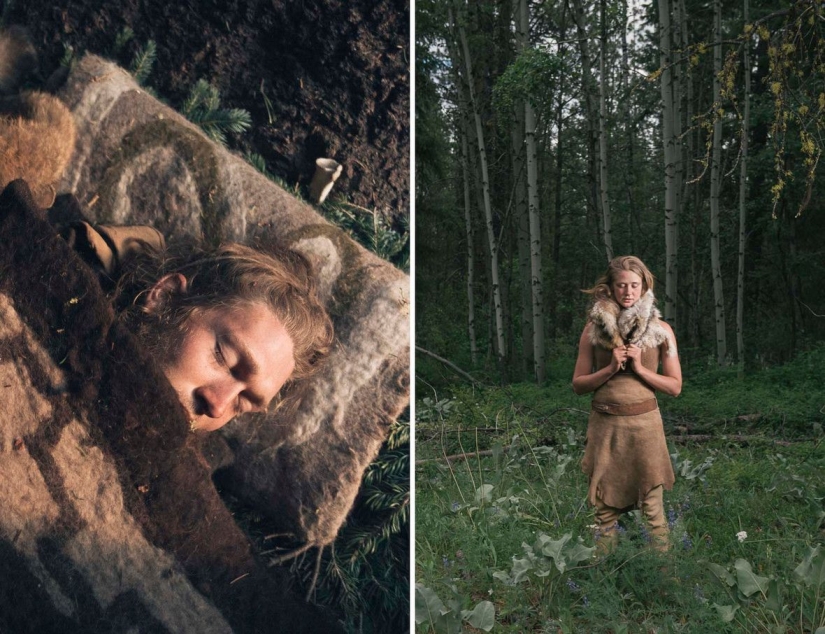
Left: Max sleep late in the morning, after a cold sleepless night. Right: Jane is going to dig the starchy roots.
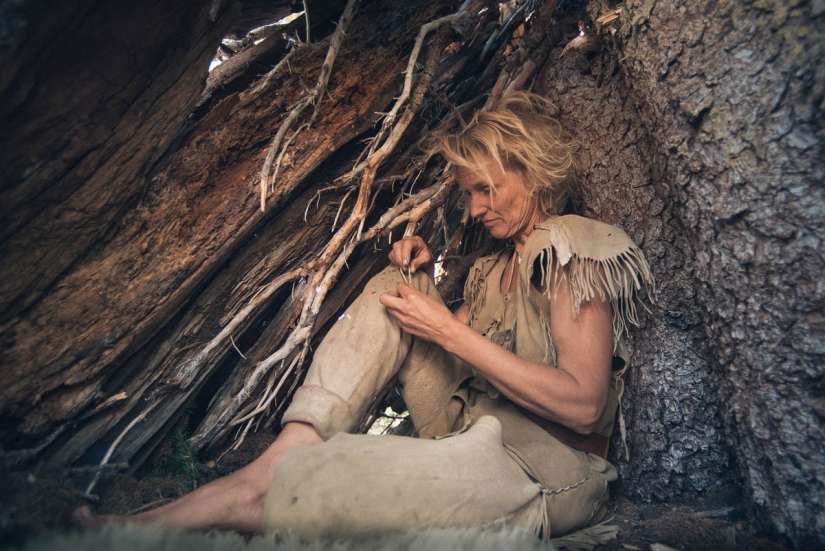
Links, hiding in the shelter from rainy and windy weather.
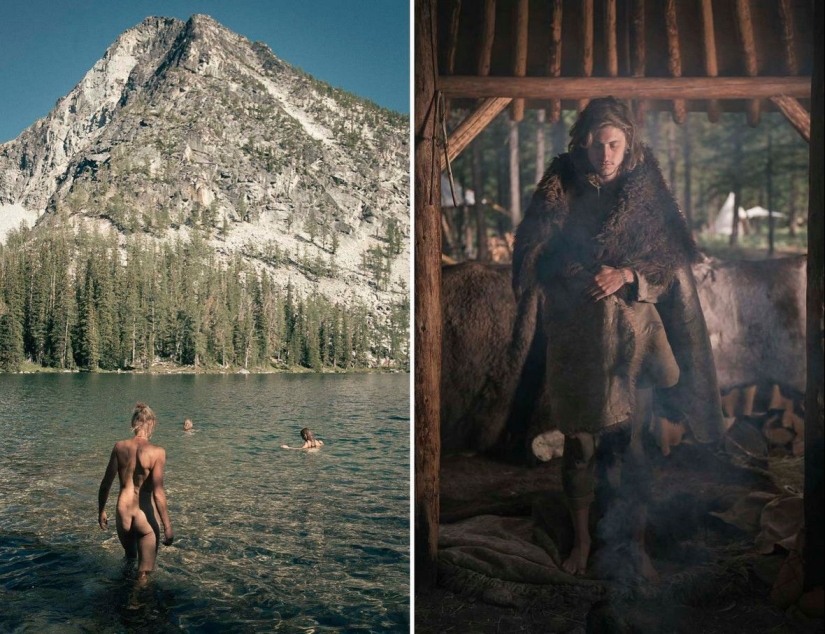
Left: time for a swim in a cool mountain lake. Few weeks the project participants feel in the forests and mountains home. Right: Nils, shivering in the morning, warm in the shelter.
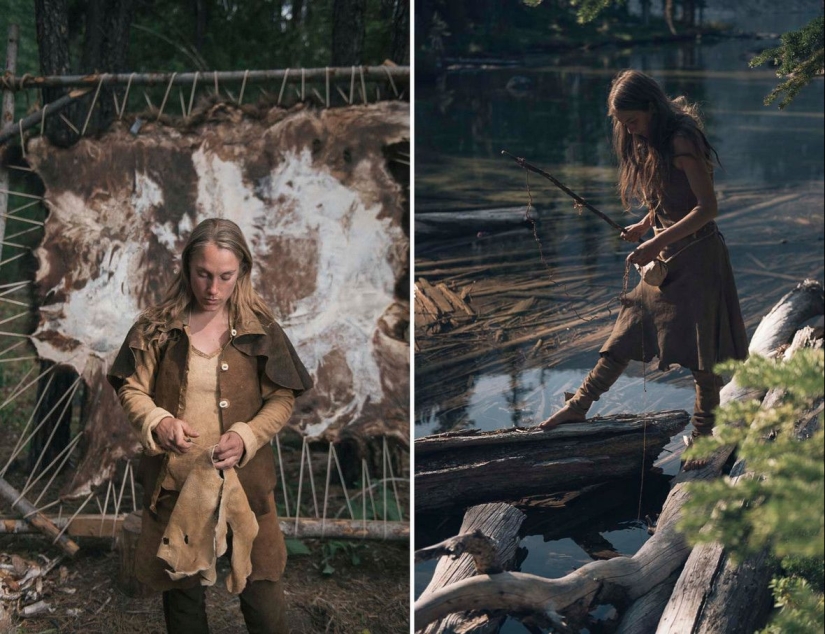
Left: Clara makes clothing from reindeer skins. Right: Jesse tries his hand at fishing with a bone hook. In the shallows she could see a small trout. But only at first glance it seems that the fishing at clear lake is a simple matter. Without experience, the task is extremely difficult.
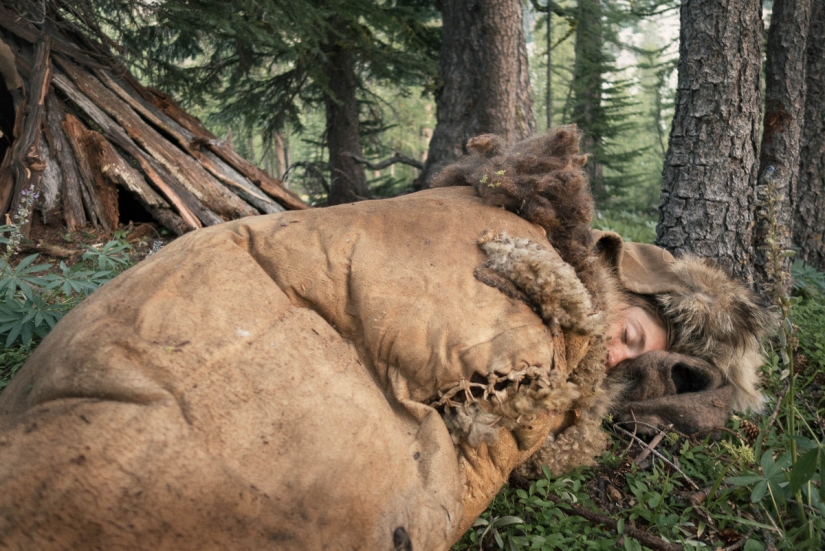
Jesse sleeps under the skin of a Buffalo, sheltered from mosquitoes and cold air in the morning.
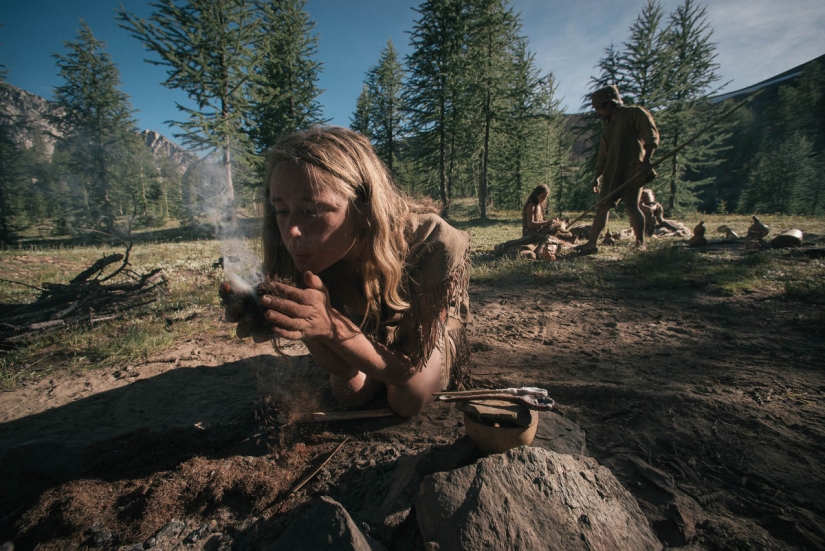
Jane fanned the flames of smoldering embers.
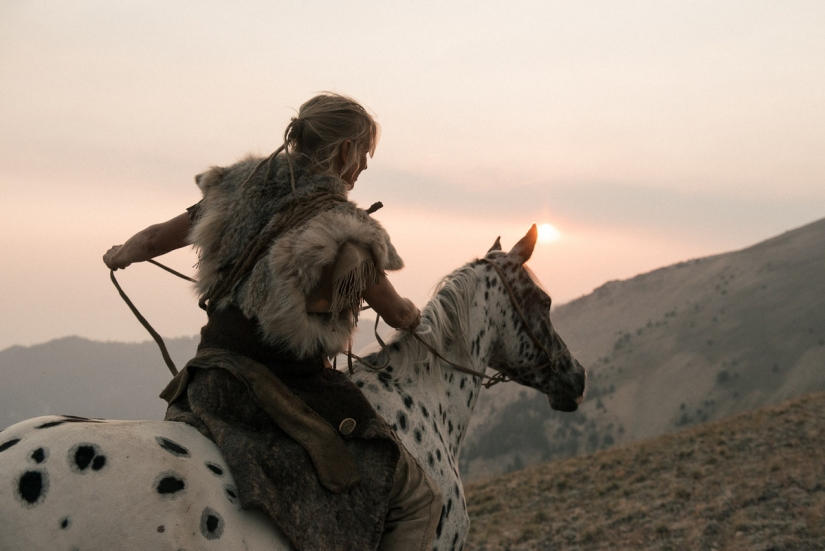
In the evening, tracking down the links, there's no smoke and forest fires, to stay ahead of their further movement.
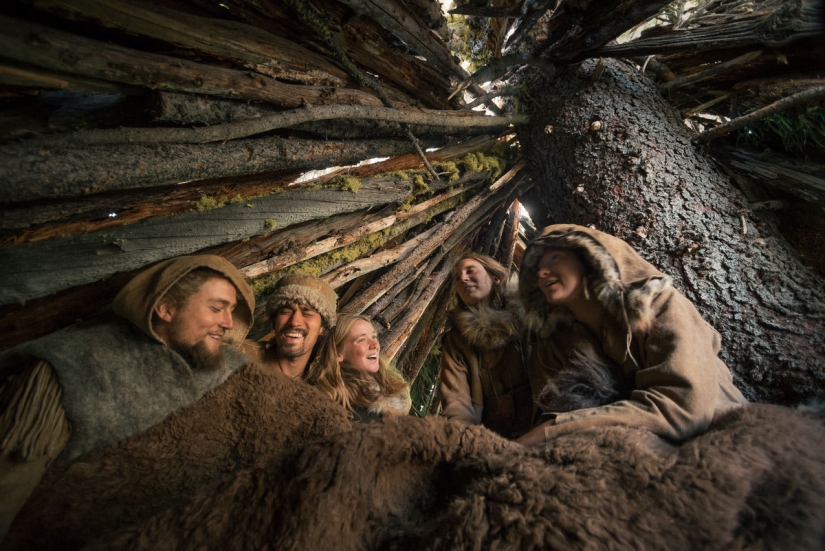
After three exhausting days spent dragging logs to build a new shelter, the group can celebrate their achievements a song together.
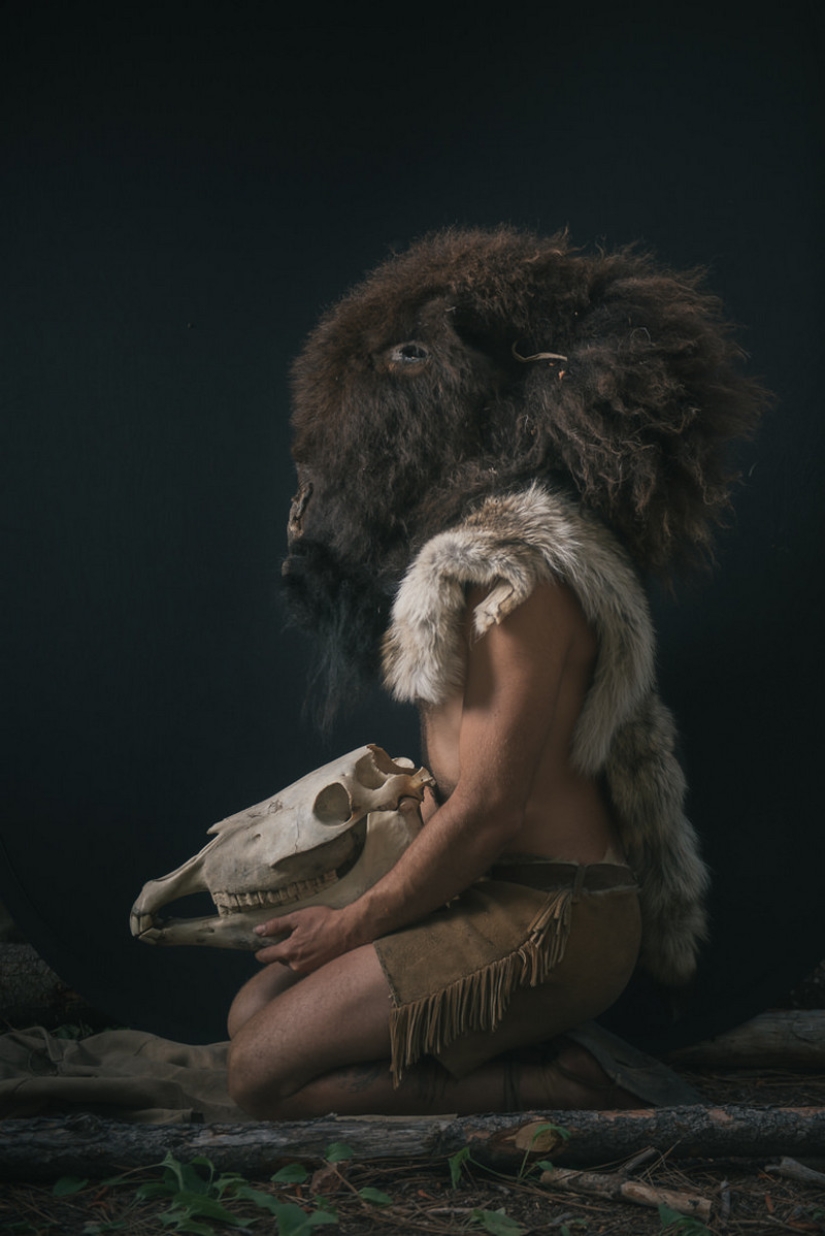
Alex in the mask of a Buffalo and a Cape from the skin of a coyote. It's part of a dance costume, which he created as an ode to the wild inhabitants of the earth.
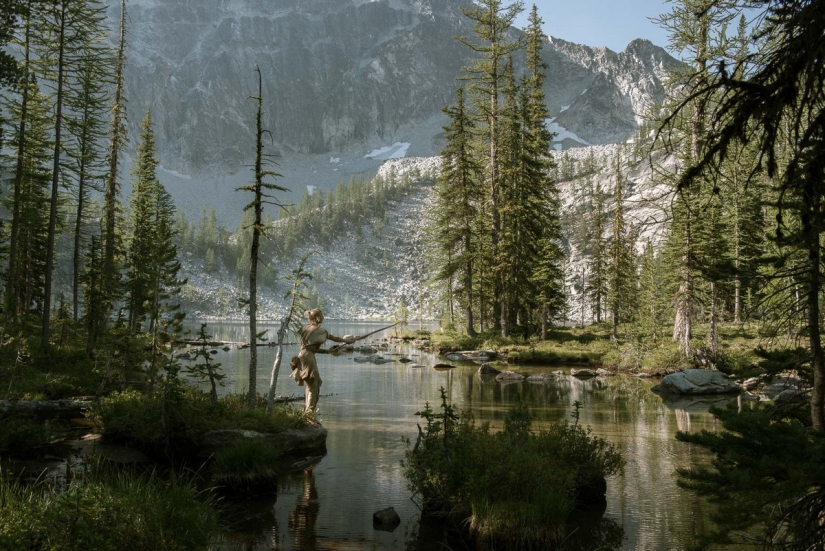
Links fishing on a mountain lake, tied to the bow rope. Although fishing is a tedious task, the fish is still the main source of protein and fats in their diet.
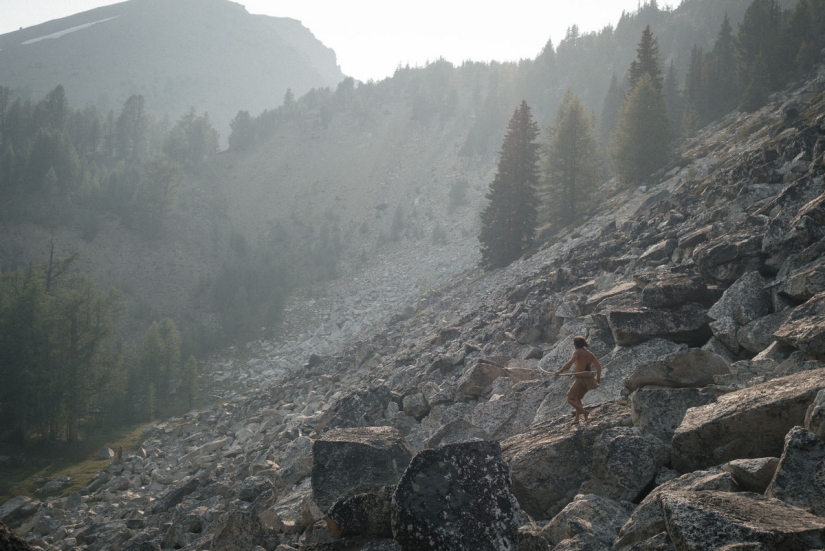
Jumping from stone to stone in search of small game, Matt will always remember about security. Not having access to modern medical care, a simple injury could prove life-threatening.
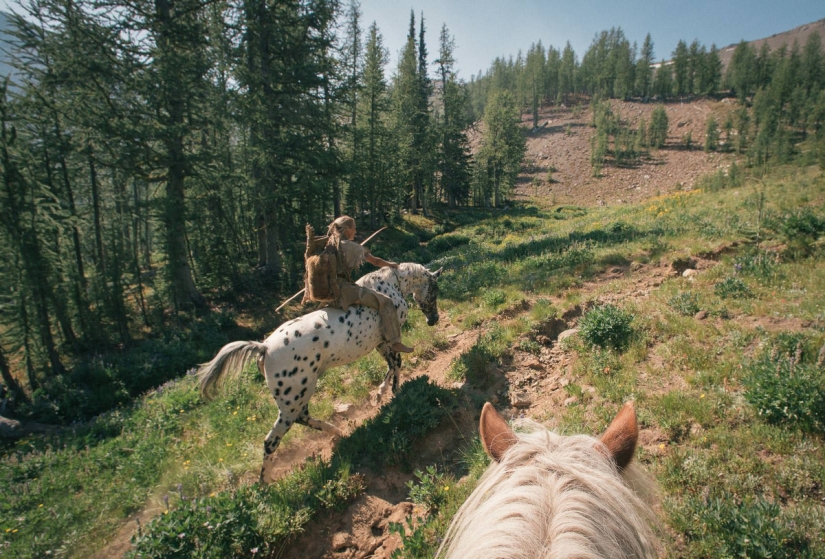
Links separately from the main group looks around the hunting camp. For many years she has created many primitive equipment.
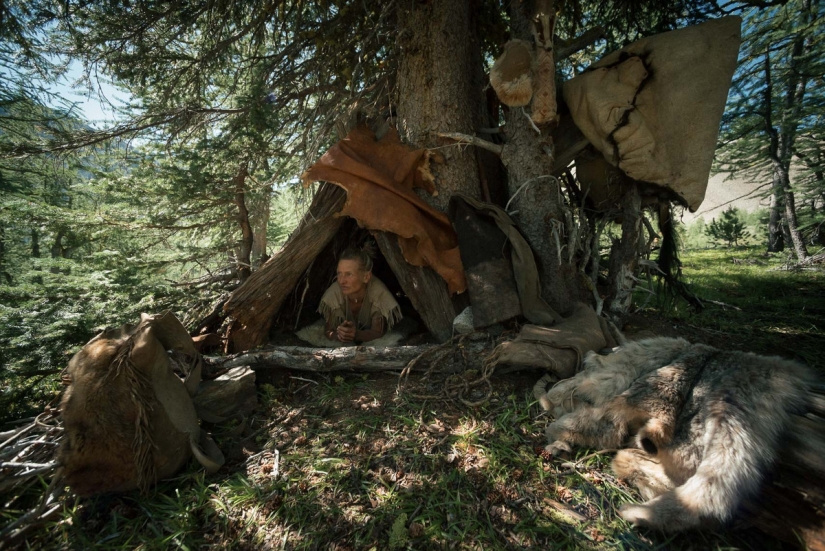
Keywords: Lifestyle | Hunters | Paleontology
Post News ArticleRecent articles

There are dolls very similar to living people. And there are so realistic that their appearance can only be explained by magic. ...

Japan is deservedly considered one of the safest countries in the world. Even organized crime there has a "human face" ...
Related articles

There is no literal translation of the word “hygge”in Russian. Hugge is a feeling of happiness, comfort and security. The Danes ...

All of us, regardless of age and nationality, United by habits associated with our daily life. They are our integral part, which is ...

Many believe that China is leading in terms of population due to the high birth rate. This is not quite true, because life ...

Famous British photographer Bob Carlos Clarke was born in an Irish corps in 1950. In 1969 he moved to England to study art and ...